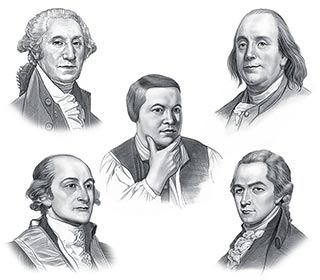Facts about Plantation Farming
The following facts provide an overview of the advantages and the disadvantages of plantation farming.
Crops were planted on a large scale with usually just one major plant species growing
The economy of plantation farming was based on agricultural mass production requiring a large labor force
The Southern colonies who practised the system of plantation farming were the Maryland Colony, Virginia Colony, North Carolina Colony, South Carolina Colony and the Georgia Colony
Plantation Farming specialized in the growth of just one major plant species
The crops ideally suited to plantation farming in the Southern colonies were cotton, tobacco, rice, sugar cane and indigo (a purple dye)
The mass production of crops required a suitable transport system to transport the goods to market. The waterways of the South provided a natural transport system
The reason that the system of plantation farming sprang up in the South was due to the climate of the regions. Mild winters and hot, humid summers made it possible to grow crops throughout the year which was ideally suited for plantation farming
The difference between plantations and backcountry farms was economies of scale. Small backcountry farms had a small labor force and concentrated on 'subsistence farming', that is most crops were produced for personal use, any surplus was used to trade for goods not produced on the farm. The economy of the plantations was based on a massive labor force and the ability to produce large quantities of cash crops
Plantation farming requires a tropical or subtropical region
Plantation crops were determined by soil. The fertile soil of the Southern colonies was highly suited to the growth of plants used in plantation farming
The sheer size of the land covered made the plantations to large degree, self-sufficient and similar to a small village with the main house, slave quarters, a dairy, blacksmith's shop, laundry, smokehouse and barns
Crops were traded for items that could not be produced on the plantations including shoes, lace, thread, farm tools and dishes
The longer a crop's harvest period, the more efficient was plantation farming
Vast areas of land had to be cleared for planting and crops had to be sewn and harvested by hand - this was only made possible with a large labor force
Cheap labor was essential for the plantations to become profitable. The use of slaves in the Southern colonies was extensive. After the initial cost of purchasing a slave little expenditure was required to support the slaves. The successive generations of slaves born on the slave plantations ensured that their masters gained new employees at no cost
The growing number of slaves over time allowed plantation farming to expand to farm different plantation crops.
Plantation farming in the Southern colonies evolved over 200 years - it did not happen at once. Tobacco was the first crop used in plantation farming in the 1600's. Rice and Indigo Plantations were established in the 1700's. Cotton and Sugar Plantations were not established until the 1800's
The number of slaves in the Colonial Era increased from 10,000 in the 1600's to 400,000 in the 1700's
Plantation farming required minimum input from the owners - overseers were hired to manage the slaves and crop production. The owners of the small farms had to participate in the hard work associated with farming
Typical Plantations ranged from 500 to 1,000 acres. Each acre produced about 5,000 plants
Tobacco: Tobacco was the first crop raised by the system of plantation farming and became the biggest export to England in the 1700's, followed by the exports of rice
Indigo: The cultivation of indigo produced one-third of the total value of the exports from the Southern slave plantations before the Revolutionary War in the 1800's. Indigo was not grown on colonial plantations until Eliza Lucas Pinckney (1722–1793) developed the indigo plants as an additional cash crop in the late 1700's
The use of slaves kept the costs down on the Slave Plantations - they were not well fed, well housed or well treated. Slaves were sometimes expected to work 18 hours a day. Paid workers would have significantly reduced the profits made from plantation farming
There was limited machinery available to help with the arduous work related to plantation farming - the work was all done by the slaves
Plantation farming involves the deliberate introduction and cultivation of economically desirable species of tropical plants and the widespread replacement of the original native and natural flora.
The labour-intensive system of plantation farming declined abruptly in the United States with the abolition of slavery
